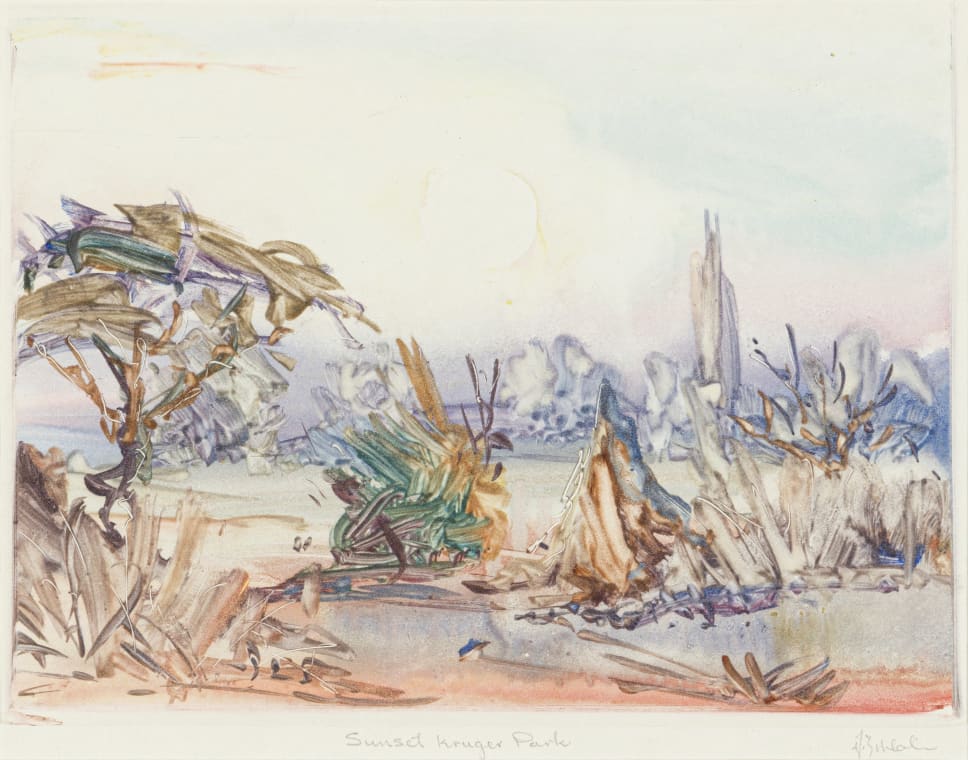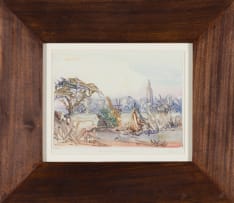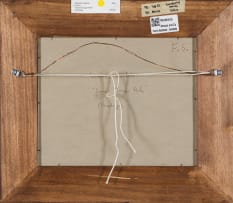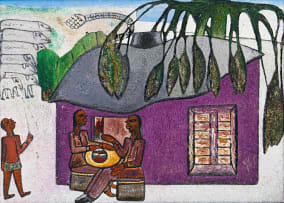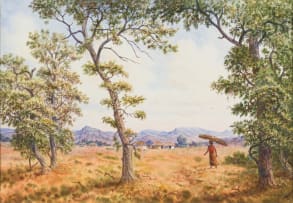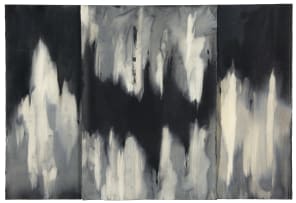Sunset Kruger Park
Durant Sihlali
About the SessionFrom Thomas Baines to Jake Aikman, Curatorial Voices: African Landscapes, Past and Present will showcase art by pioneering modernist and trailblazing contemporary artists, spanning 175 years of visual landscape painting on the African continent. This comprehensive auction reveals a nuanced understanding of the diverse cultural, historical, and environmental contexts that have shaped artistic representations of the landscape. Through an examination of various themes, the auction seeks to engage viewers in a dialogue that transcends time and space, connecting past representations to contemporary perspectives. The auction attempts to engage with the diversity of artists that have shaped and continue to shape the depiction of Africa through time.
The auction invites viewers on a captivating journey through the artistic expressions that mirror the multifaceted nature of African terrain. Through meticulous curation and insightful analysis, the catalogue aspires to be a valuable resource for scholars, art enthusiasts and anyone eager to embark on a thought-provoking exploration of Africa’s rich and complex artistic heritage.
Curatorial Voices
Recognising the dynamic discourse surrounding African Landscape, both past and present, the auction features texts by invited contemporary curators responding to the auction selection and themes. As external voices, they provide critical insights into the complexities of the landscape theme. By amplifying these contemporary perspectives, the exhibition seeks to bridge the gap between traditional representations and the ever-evolving discourse on the role of African art within the global art market.
Azza Satti, Independent Curator, Kenya
Azu Nwagbogu, Founder and Director of the African Artists’ Foundation (AAF), Nigeria
Camilla van Hoogstraten, Head of Sales, Latitudes Online
Ugoma Ebilah, Curator, Gallerist & Founder of Bloom Art
Nkgopoleng Moloi, Independent Curator, South Africa
Incl. Buyer's Premium & VAT
About this Item
signed, inscribed with the title in pencil in the margin; inscribed with artist's name, the title and medium on the reverse and on a label adhered to the reverse
Notes
An irrefutable figure in the story of art in Johannesburg, Sihlali is best known for his large output of watercolours made en plein air between the late 1960s and early 1980s. Sihlali used watercolour in a reportorial way associated with nineteenth-century artists like Thomas Baines and Constantin Guys, to describe - often in unsentimental terms - Black life in apartheid Johannesburg.1 A prolific artist, Sihlali was also an accomplished printmaker. His earliest monotypes - unique prints made from painted images created on a non-absorbent surface like glass or copper - date as far back as the 1960s. Sihlali's earliest monotypes depicted singular human subjects (an accordion player, a newspaper seller) and urban landscapes, notably Soweto where he lived.
As is evident in this expressive work, Sihlali did not limit himself to urban subjects. In the great tradition of pleinairism he roamed, portraying what intrigued him, including rural landscapes. Sihlali's later use of colour in his monotypes introduced a sensitivity that evoked the chromatic elegance of his accomplished watercolours. The print medium enabled Sihlali in new ways, allowing him to experiment with line and washes of colour, in effect to invite abstraction into his work. Similar to a 1982 monotype showing sunrise at a rural compound, Sihlali's focus in this undated landscape made in the Kruger National Park is the architecture of its bushveld, in particular its grasses, trees and termite mounds.
The Kruger National Park was not exempt from the laws of apartheid South Africa. Access to other race groups was long permitted, but complaints about racial mixing at campsites prompted the establishment of Balule on the south bank of the Olifants River in 1932 for use by Africans and Indians.2 It is unknown when Sihlali visited the park and whether he stayed overnight. His print, with its assured sgraffito markings and washes of pastel colours, is nonetheless historically important. Building on work by writers Miriam Tlali and Njabulo Ndebele, historian Jacob Dlamini recently published on the existential state of Black tourism in South Africa, past and present.3 Sihlali's work is an important visual contribution to this on-going research and recovery of a right to leisure in wild places.
1.John Peffer (2009) Art and the End of Apartheid, Minneapolis: University of Minnesota Press, page 198.
2. Jacob Dlamini (2020) Safari Nation: A Social History of the Kruger National Park, Johannesburg, Jacana Media, ebook.
3. Ibid.
This lot has been selected by Curatorial Voice: Nkgopoleng Moloi.
